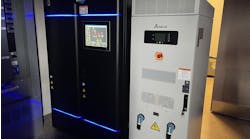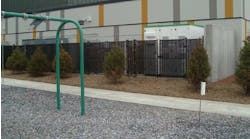Affordable, reliable, and safe electricity is fundamental to modern life. Dating back to the 1880s, Thomas Edison’s light bulb was one of the first applications of electricity — it radically challenged the status quo by introducing people to an entirely new type of energy. This new energy fostered many industries required to generate, transmit, and use the electricity fueling the economy and our livelihoods for the decades that followed.
The latest trend toward electrification — a shift in spending from high- to low-emissions assets — could create one of the largest reallocations of capital in a century and present massive opportunities for the electrical industry. As the Inflation Reduction Act (recognized as the largest investment in climate action in United States history) gains momentum, pressure mounts to better understand how to take advantage of new capital to effectively compete. Electrification in this era will demand new power generation, transmission, and distribution to support the growth of various trends like transportation electrification, onshoring and the requirements for more reliable and renewable energy.
Preparing for this shift and meeting the demands of this latest trend is causing the electrical community uncertainty at a time when it’s already facing pressures from continued labor shortages and supply chain disruptions. Skilled labor shortages and the volatile supply chain will be the larger headwinds that could throttle growth, but perhaps the largest headwind will be the industry’s ability to implement.
How is this wave of electrification different from the past? And how should electrical contractors, engineers, and plant personnel capitalize on opportunities? In this article, we will demystify “electrification” and outline three key steps to prepare for increased capital and support incremental people/process changes to become more resilient and successful as electrification evolves.
Market drivers shaping change
The world’s energy diet is changing. For more than a century, fossil fuels (e.g., coal, oil, natural gas) have powered the world and generated electricity. Electrification (as defined today) refers to replacing technologies that use fossil fuels with technologies that use electricity as the energy source. Think of how internal combustion engines (ICE) are being supplanted by electric vehicles (EVs), commercial buildings are looking for more resilient and renewable power sources like solar, or how your household weed wacker is now battery-powered. The bottom line is the way in which power is generated, distributed, stored, and consumed is being reinvented.
To support this shift in the market, we will need dramatically more electricity that will have to be both more resilient and sustainable. According to the World Nuclear Association, projections are for electrical demand to grow two times from what it is today. This demand will be driven by several market drivers that are significantly different from the electrification efforts of the past, including:
- A wide range of international country, state, and local legislation and mandates require low-carbon solutions.
- Various ESG and sustainability initiatives for numerous companies.
- The Infrastructure and Investment and Jobs Act (IIJA) passed in 2021 and Inflation Reduction Act (IRA) passed in the summer of 2022 have nearly $2 trillion in funding to reduce the cost of low-carbon technologies.
These tailwinds will fuel the growth of this new era of electrification and should present exciting opportunities for electrical contractors. To help you capitalize on these opportunities, here are three key steps to consider:
1. Proactive project planning is essential to success.
With massive capital flowing into electrification efforts, the number of new opportunities will likely increase exponentially. The wide variety of large capital projects (like new manufacturing plants, large-scale solar projects, and electrifying fleets of vehicles) will change project scales and scopes unlike anything before. This will challenge contractors to strategically consider how to manage multiple, diverse project plans simultaneously to ensure success. Proactive project planning and supply chain execution have never been more essential to success.
2. Manufacturing and supplier ecosystem is the lynchpin to securing materials and executing at scale.
With continued strains on the supply chain, electrical contractors should exercise prudence when considering how to tackle new projects and take the long view when managing large-scale, multi-year jobs. Long gone are the days of short-term planning — not to mention having transformers, gear, and balance-of-system components readily available. Consider the current supply chain landscape and how to rely on your network of manufacturing/supply partners to reliably source and secure the materials needed to execute at scale.
3. New era of construction will pave the way to hone a specialized skillset.
While daunting, this move toward electrification presents new, exciting opportunities for electrical contractors. Consider how you can sharpen specialized, high-valued skills to support this continued trend and position yourself as an expert. From EV charging systems and equipment to solar and battery energy storage to microgrids, the electrical industry is poised for great growth and transformation in the short term. How will you capitalize on these opportunities to set the foundation for long-term success?
Nelson Squires was named executive vice president and general manager - electrical & electronic solutions of Wesco International in June 2020. Before this appointment, he held the role of senior vice president and chief operating officer from October 2019 to May 2020, group vice president and general manager for Canada and international from January 2018 to September 2019, and group vice president and general manager of Wesco’s Canadian operations from August 2015 to January 2018. Before joining Wesco, he was vice president and general manager of North American gases and president of Air Products Canada Limited for Air Products and Chemicals, Inc. Nelson joined Air Products in 1989 as a sales engineer and earned numerous assignments of increasing responsibility in region and general management positions, mergers and acquisitions and investor relations. He served as a Captain in the U.S. Army and holds a Bachelor of Science degree from Wake Forest University.




